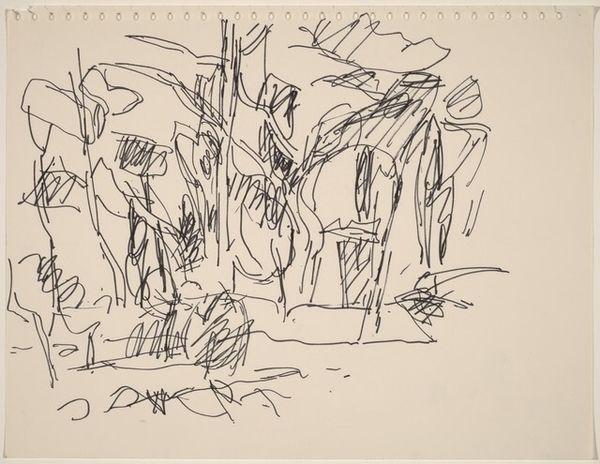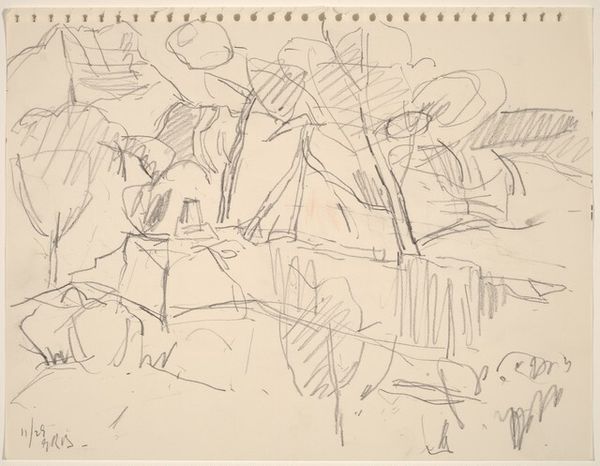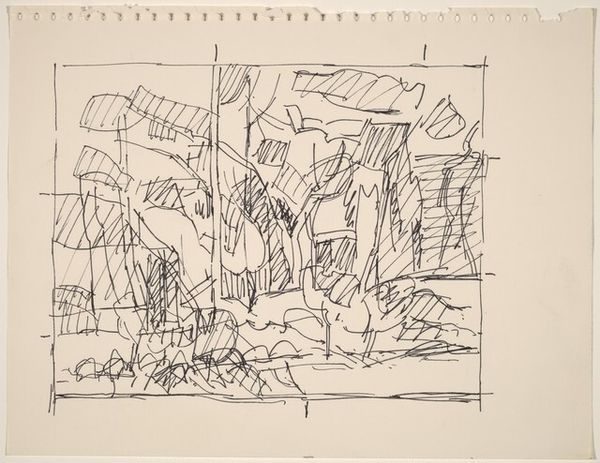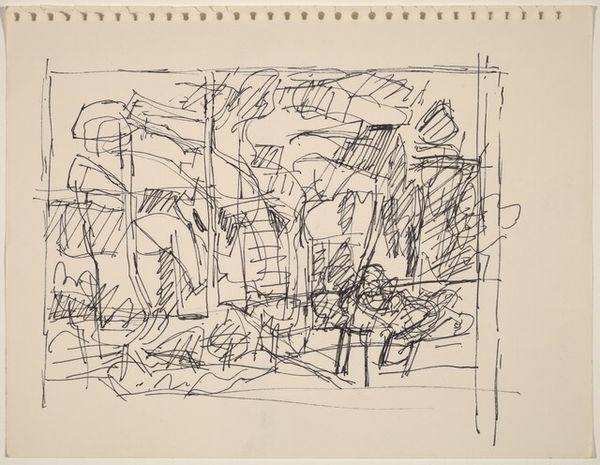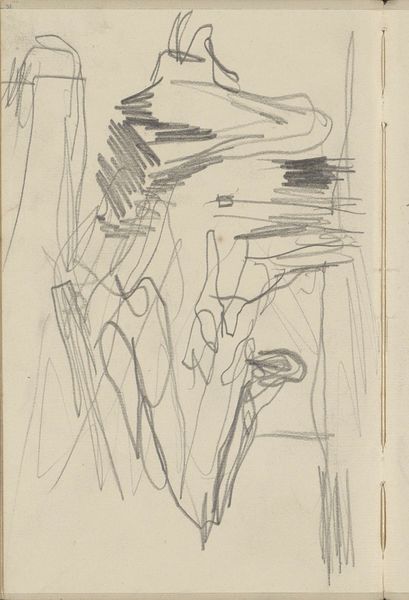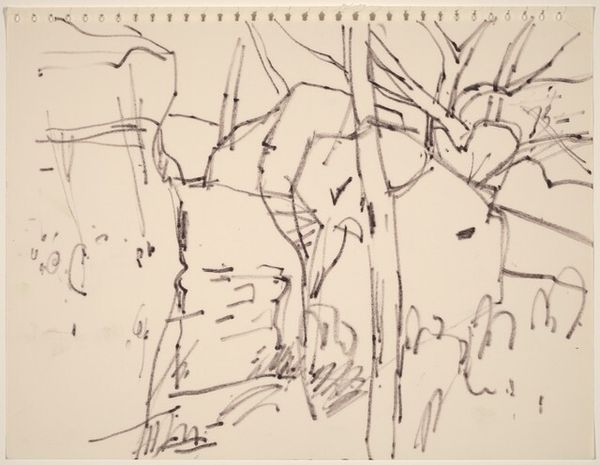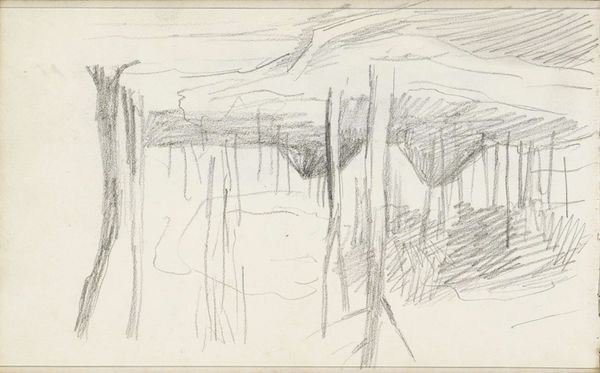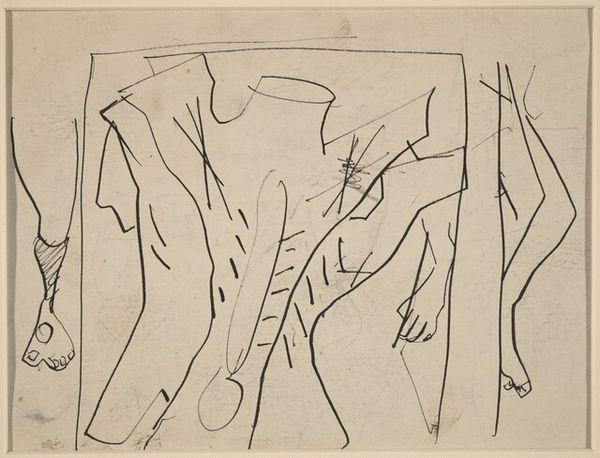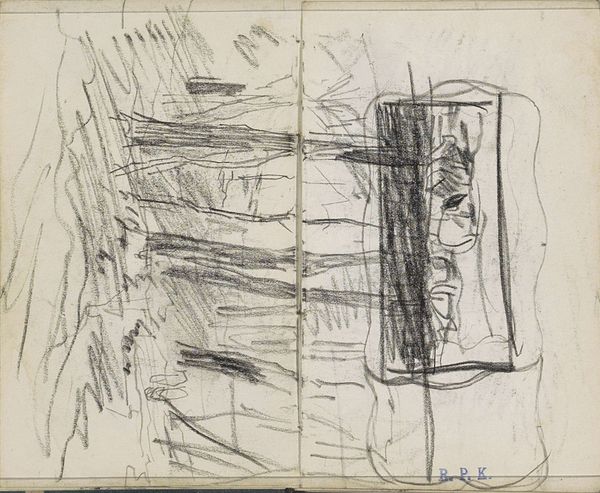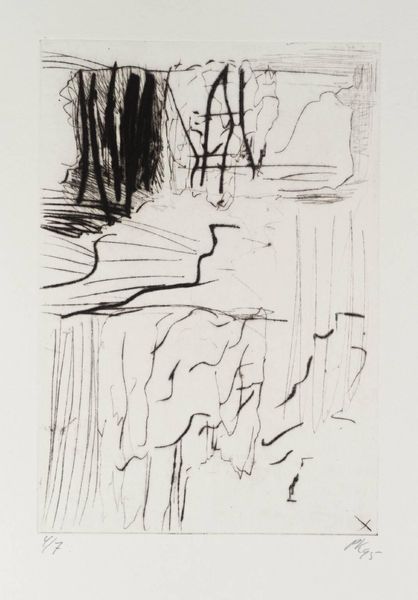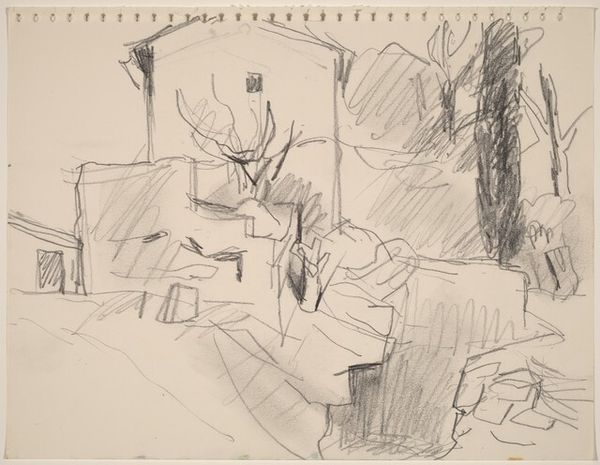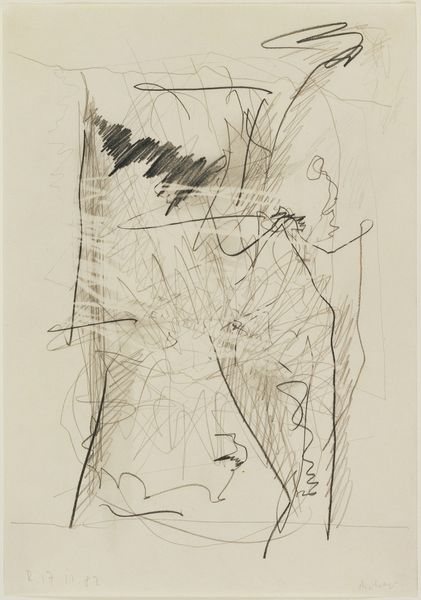
drawing, ink, pen
#
drawing
#
light pencil work
#
ink drawing
#
pen sketch
#
incomplete sketchy
#
ink line art
#
personal sketchbook
#
ink
#
ink drawing experimentation
#
pen-ink sketch
#
abstraction
#
line
#
sketchbook drawing
#
pen
#
modernism
#
initial sketch
Dimensions: sheet: 21.4 x 27.8 cm (8 7/16 x 10 15/16 in.)
Copyright: National Gallery of Art: CC0 1.0
Curator: Let's turn our attention to this intriguing piece, an "Untitled" work created around 1969 by George Bunker. It's primarily rendered in pen and ink. Editor: My first impression is one of almost frenetic energy. The lines are so immediate and raw, as if the artist were racing against time to capture a fleeting thought. Curator: Indeed. Looking at this through a sociocultural lens, the late 60s were marked by upheaval, protests, and rapid change. Could this frenetic energy mirror the anxieties and the creative explosion of the era? Bunker, though not as widely recognized, was certainly engaging with similar modernist ideas of his time. Editor: Perhaps, but structurally, I’m fascinated by the deliberate ambiguity. We can discern shapes, perhaps suggesting objects or figures, but they never quite solidify. The artist employs line weight and density strategically, creating depth and focal points without ever fully committing to representation. It seems almost like an exercise in deconstruction, questioning the very nature of form. Curator: Precisely. This ambiguity allows us to project our own narratives, our own understandings of identity and experience, onto the work. And the 'sketchbook drawing' quality invites us into the artist’s process, making it a deeply personal, almost vulnerable statement. Consider how marginalized voices, then and now, often navigate a world that refuses to see them clearly. Is Bunker's work perhaps a commentary on the fluidity and constructed nature of reality itself? Editor: An interesting angle. But couldn't this also be interpreted as a purely formal exercise? A dance of lines and negative space, exploring the fundamental elements of art without necessarily bearing a specific political message? The joy here might simply be the act of creation, the play of visual elements, independent of social narratives. Curator: I appreciate that perspective. But I feel that isolating art from its context is a disservice. Bunker was working in a world shaped by very real socio-political forces. It’s important to consider how those forces might have informed his artistic choices, consciously or unconsciously. Editor: I agree context matters, but I'm wary of solely anchoring meaning in external narratives. Let us appreciate how the work embodies abstraction, its modernist lineage, and how effectively the light pencil work brings the artwork together. Curator: Ultimately, the power of art lies in its ability to spark these kinds of dialogues, these diverse interpretations. George Bunker gives us plenty to unpack. Editor: Agreed, the very incompleteness encourages us to contemplate on meaning, purpose, and form.
Comments
No comments
Be the first to comment and join the conversation on the ultimate creative platform.
